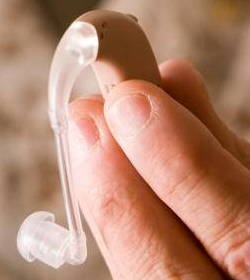The Function of Audiologists in the Fitting and Modification of Hearing Aids
Millions of people throughout the world struggle with hearing loss, and hearing aids have emerged as a crucial remedy. However, an audiologist's knowledge is needed in order to choose and properly fit the hearing aid. This article will examine the vital part audiologists play in the fitting and adjusting of hearing aids. We will also discuss common brands and models of hearing aids, including BTE hearing aid (Behind-the-Ear hearing aid), CIC hearing aids (Completely-in-Canal), micro ear machines, and Widex.
Understanding
Audiologists' Roles
Health practitioners with a focus on diagnosing and treating hearing issues include audiologists. Their function in relation to hearing aids is varied. To ascertain the degree and kind of a patient's hearing loss, audiologists first perform a thorough hearing assessment. Tests used in this evaluation include speech audiometry, pure-tone audiometry, and others.
An audiologist carefully collaborates with the patient to recommend the best hearing aid based on the test results. They take into account things including the severity of the hearing loss, lifestyle requirements, cosmetic preferences, and financial limitations. Audiologists are well-versed in a variety of hearing aid types and manufacturers, such as Widex, which is well-known for its cutting-edge technology and avant-garde designs.
Investigating the various hearing aid options
Hearing aids worn behind the ear are known as BTEs (Behind-the-Ear) and are attached to a bespoke earpiece by a tiny tube or wire. This design is ideal for a wide variety of hearing losses, from light to deep, and allows for a potent sound amplification.
Hearing aids called CICs (Completely-in-Canal) are tiny devices that fit entirely inside the ear canal, nearly unnoticeable. They offer a discreet hearing solution because they are created specifically to fit each person's ear canal.
Micro Ear Machines: Also known as ITE (In-The-Ear) hearing aids, micro ear machines are small, custom-made devices that fit inside the outer part of the ear. They provide a cozy and convenient alternative for people with mild to moderate hearing loss.
Audiologists'
role in fittings and modifications
The audiologist begins the fitting procedure after choosing the proper hearing aid. This entails customizing the system to the patient's individual hearing requirements. Widex's ear machine come with cutting-edge features including feedback cancellation, noise reduction, and different listening options. Audiologists modify these settings using specialized software to meet each patient's specific needs.
The audiologist checks that the hearing aid fits securely and comfortably during the fitting consultation. They check its operation and offer comprehensive instructions on how to use and maintain the apparatus. They also talk to patients about having reasonable expectations and answer any queries or worries they may have.
Even if you get an ear machine online but for successful hearing aid use, routine follow-up visits are essential. As the patient becomes accustomed to the device, audiologists help with changes and fine-tuning. This could entail adjusting the settings, dealing with discomfort or feedback problems, and making sure the sound quality is at its best. To assist patients in navigating the emotional and psychological elements of living with hearing loss, audiologists also offer counseling and support.
Successful hearing aid fitting and
adjusting depend heavily on audiologists. Their knowledge guarantees that
people with hearing loss obtain the best technology for their particular need.
People who work with audiologists and take into account reputed companies like
Widex can benefit from greater hearing, improved communication, and an overall
higher standard of living.




Comments
Post a Comment